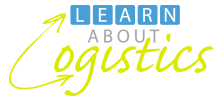Rights and wrongs in supply chains.
The visibility of supply chain professionals is increasing in organisations. Therefore it is more likely that you will be asked by senior management or the board of directors for input to decisions about such factors as the future business model (including off-shoring and global procurement) and technology investments.
The challenge in writing the report will be to make sense of the competing views and opinions available through all forms of media. As an example of an industry topic, apparel retailers in developed economies are being scrutinised by non-government organisations (NGOs) concerning their business models. The argument is that the ‘cost down’ approach of the apparel industry does not encourage an understanding of:
- the nodes and links in supply chains (a 2017 report of 106 clothing retailers in Australia states that only seven percent of respondents knew where their cotton originated);
- environmentally destructive processes (such as inefficient leather tanneries and over use of pesticides on cotton farms) and
- exploitative labour practices that result in deaths and injury of textile and clothing workers
However, retailers counter this argument through establishing sustainability policies for suppliers and funding independent inspections of facilities. In addition, some identify investment in schools and medical facilities at supplier premises. But the response is that many ‘sustainability’ initiatives are focused on short-term cost aspects, rather than attempting to eliminate complex and interrelated problems. So, here are examples of ‘right and wrong’ approaches that a supply chain professional needs to identify and analyse.
Similarly, for other industries, there can be negative and positive media articles and programs, with sugar and cocoa being recent examples. Similarly, change in industries caused by ‘digital supply chains’, the potential for ‘collaboration’ between parties in supply chains and potential protectionist threats to ‘globalisation’ are also generating media attention.
The challenge, when evaluating the various points of view on a topic, is to ensure that your inputs within a report for senior management are accepted as reliable and therefore respected.
Filtering and evaluating information
The author of a business report is required to do a lot of reading, but the challenge is to identify credible information. This is more so with the ease of Internet searches, where blog posts (with a potential lack of editorial rigour) and peer reviewed articles can appear concurrently. To assist with filtering articles and evaluating their content, a memorably named acronym CRAAP was developed by Sarah Blakeslee of the Meriam Library, California State University at Chico and a member of the the American Library Association. The CRAAP test consists of five criteria: currency, relevance, authority, accuracy and purpose. Over time, the dot points supporting each criteria have been extended.
Currency: timeliness of the information
- When was the information published or posted?
- Has the information been revised or updated?
- Is the information current for your topic?
- Are the Internet links in the article functional?
Relevance: importance of the information for your needs
- To what extent does the information relate to the topic or answer your question?
- Articles of many pages may contain only a small amount of relevant information
- Is the information at an appropriate level for your needs?
- Who is the intended audience for the article?
- Would you be comfortable using this source in a business proposal or research paper?
Authority: source of the information
- Who is the author, publisher, source or sponsor?
- What are the author’s education background, credentials, experience or organisation affiliation?
- Are they relevant to the topic and relate to the information?
- Is there contact information, such as a publisher or e-mail address?
- Does the URL reveal anything about the author or source?
- .com (commercial), .edu (education), .gov (government), .org (non-profit organisation)
- Evaluate blogs carefully, even those from trusted news sources
- Some blog sites allow outside contributors to post, with limited editorial oversight
Accuracy: reliability, truthfulness and correctness of the content
- Is the information provided supported by evidence?
- Where does the evidence come from?
- Has the information been reviewed or refereed by professionals in the affiliated field(s)?
- Can the information be verified in another source or from personal knowledge?
- Do not rely on information obtained from a single source. Check multiple sources with different opinions
- Is the language and tone free of bias and emotion?
- Are there spelling, grammar or other typographical errors?
Purpose: reason the information exists
- Do the author/sponsor make their intentions or purpose clear?
- What is the purpose of the information? – to inform, teach, persuade or sell
- Do you consider the information as fact, opinion or propaganda?
- Does the point of view expressed appear as objective and impartial?
- Are there political, ideological, cultural, religious, institutional or personal biases?
The Filtering process is to first, ensure the validity (authority) of your source. Then do the same for the other four factors. If the information contained in an article has authority but lacks currency, relevance, accuracy, or purpose then it is not worth using as a reference. To mark an article, score each of the five categories on a scale from 1 to 10 (1 = bad, 10=very good). Then total the scores and rank on the basis of:
- 45 – 50 Excellent
- 40 – 44 Good
- 35 – 39 Average
- 30 – 34 Borderline Acceptable
- Below 30 – Unacceptable
Using this very valuable approach to evaluation provides consistency and confidence in referencing the selected articles as support for your approach and conclusions. In turn, it underpins your confidence when presenting the report and defending its findings.

